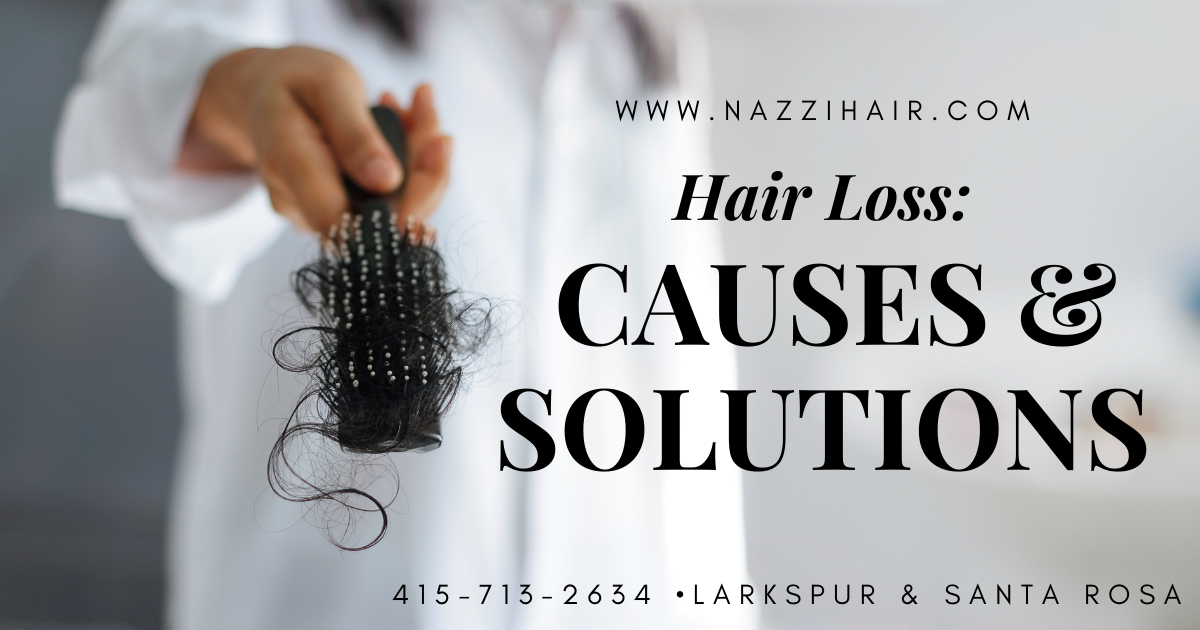Hair Loss: Causes & Solutions

Hair Color and Hair Loss
The drain in the shower is frequently clogged with hair immediately after people dye their hair with permanent hair dyes. These are hairs that are normally shed as part of the hair renewal process. When chemical exposure occurs in combination with rubbing the scalp, hairs on the verge of shedding may be dislodged if they come into contact with hair dye. If the hair has not been shampooed for a long time, it should not shed more than 125 strands. Alopecia is not caused by medically induced hair loss that happens as a result of manipulating the scalp during the coloring process.
The body sheds its hair as part of its natural renewal process. Hair follicles go through natural cycles of growth and rest every day. Growing hair is a high-energy activity for the body. As part of the renewal process, hair sheds, are an important part of maintaining healthy hair.
Hair Loss vs Hair Breakage
In order to avoid confusion about hair loss and hair thinning, one needs to distinguish between the two. A medical definition of hair loss is a loss of hair from the root. At the end of a strand of hair that has been shed at the root, you can see the tiny white remnants of the hair bulb, which looks like a pear-shaped white speck. The way to tell if the hair has been shed or broken is to examine it. The hair bulb at the end of broken hair is missing. Using improper hair dye or damaging the hair shaft can both cause hair loss. Hair breakage occurs because hair dye weakened the hair shaft and any subsequent trauma, such as brushing or combing, caused the hair shaft to fray.
Can Hair Dye Cause Hair Loss?
A hair dye cannot penetrate hair follicles and penetrate the scalp. Consequently, hair dye cannot and does not cause hair loss, however, it can damage the hair. Permanent hair color is preferred by most people who dye their hair. A chemical reaction must occur within the hair shaft during the coloring process to make the color last. This alters the hair shaft permanently. In permanent hair dyes, colorants are used, which are actually colorless. The colorants are mixed with hydrogen peroxide and a chemical reaction occurs. Once the two ingredients are combined, the hair color appears. Because hair is non-living, any damage caused by this chemical reaction cannot be repaired.
Those alterations to the hair shaft are necessary for hair color to last and can weaken the protein that provides strength to the hair. Damage to the hair shaft may sometimes result in hair breakage if the hair is not properly cared for. It is important, therefore, to use reputable hair dyes, follow manufacturers' instructions carefully, and keep hair color off for shorter periods than recommended. To maintain the health of your color-treated hair, you will also need to properly care for it between colorings.
Hair Loss and Medical Conditions
When your hair shedding exceeds 125 strands per day, this could be a sign of a different problem unrelated to hair coloring and could result in substantial hair loss or baldness over time. In ill health, hair loss can result from a variety of medical conditions and require medical attention. Hair loss can be caused by a variety of health issues such as alopecia, thyroid disease, anemia, cancer treatment, lupus, or high fevers. There is also a possibility that hormone imbalances might cause hair loss. If you are experiencing unexplained hair loss, speak with your doctor to see if a treatment can be recommended.
The result is that you can cover your gray hairs if you want, or get the color of your hair that you want. It's safe and does not cause hair loss or thinning. The proper use of quality hair color products will minimize hair breakage when accompanied by excellent post-coloring care.
Get in touch with Nazzi in Larkspur and Santa Rosa, California to set up an appointment, she will help you with these ideas. For more information, visit www.nazzihair.com.
The information contained above is intended for general reference purposes only. It is not a substitute for professional medical advice. Always seek the advice of your physician or other qualified health professional before starting any new treatment.


